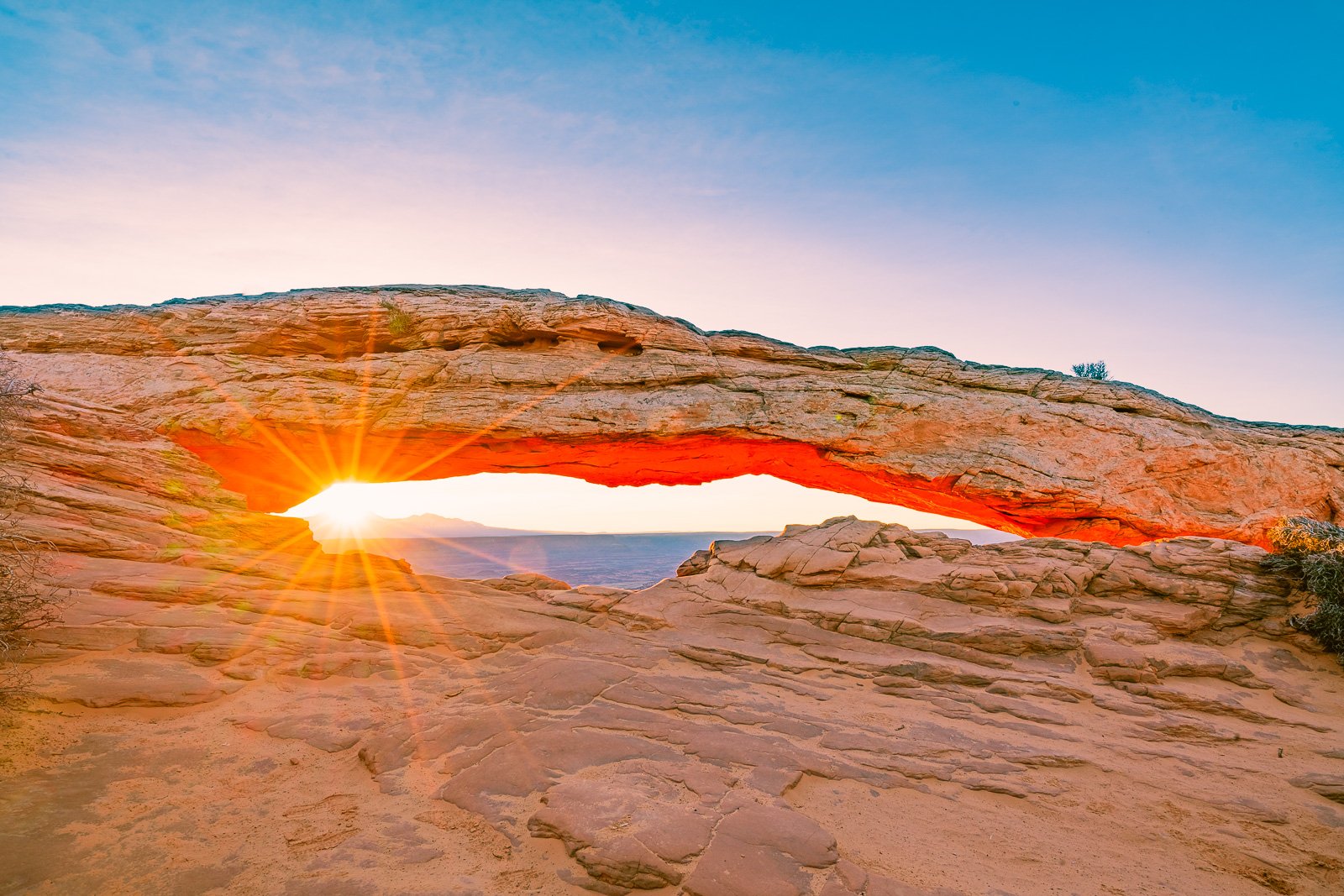MOAB
Moab is a small town in southern Utah. It serves as the staging point for excursions into Arches and Canyonlands National Parks and many outdoor sporting activities, such as mountain biking and hiking. When planning our visit to Moab, I was convinced that I couldn't find a National Park that I loved more than Zion and Bryce; but the Moab Region proved me wrong. It stands unmatched in the pantheon of spectacular national parks. Read More...
Arches National Park. Our first destination was Arches National Park, located 100 miles from Salt Lake City and Denver, covering over 275 square miles. It is famous for its 2,000+ natural sandstone arches and unique rock formations such as Balanced Rock, Delicate Arch, and Devil's Garden. We started our day pre-dawn, making a beeline to balanced rock to shoot sunrise photos. We were rewarded with a lovely, clear morning. After we snapped a few hundred sunrise photos, we double-backed to the park entrance. We took in many other spectacular formations, including Park Avenue, Courthouse towers, and the Three Sisters. Later in the afternoon, we spent a couple of hours hiking around The Garden of Eden, Turret Arch, and Double Arch, possibly our favorite part of the park. The next day we made our way out to Delicate Arch, which in and of itself is worth the price of admission. We captured the arch and its environs during sunset on a perfect day. You can't understand the scale of the arch and the steep sandstone bowl depression adjacent to it. At the tail-end of the trip, I had an opportunity to take photographs of Arches' formations against the night sky. This was my second attempt at astrophotography, so I was a bit nervous about the results, but the beauty of Moab makes it easy to capture amazing photos.
Canyonlands National Park. Canyonlands is a 30- mile drive from Moab. The park is divided into four districts: Island in the Sky, The Needles, The Maze, and The Rivers. The Colorado River runs through Canyonlands National Park. It is one of the most important rivers for drinking water, irrigation, and recreation in the U.S. Unfortunately, climate change has significantly affected this region as it has been locked in an extended drought resulting in a significant reduction in water flow. Most of this trip was focused on Arches, so we could only visit the Island in the Sky district. We headed out for our first trip to Canyonlands around 3 a.m., hoping to capture Mesa Arch before sunset. Due to the lack of natural light and poor signage, it took us a while to find the path that led to the arch. As the sun began to rise, a thick layer of cloud cover rose with it, and it was clear that we wouldn't be capturing the sunrise that morning. But, what made a disappointing sunrise, made a fabulous morning of shooting as we toured Buck Canyon and Grand View Overlook, which features fantastic views of the high desert. I was determined however to my Mesa Arch sunrise, so the next morning, I again woke up around 3 a.m to claim my spot in front of the arch and wait for the sun to do it sun thing. This time, my persistence was rewarded and I caught an perfect sunrise - one that it is hard to beat.
Corona Arch. Corona Arch is the second tallest arch in the world and is a must-see sightseeing spot for people traveling to Moab. It is a sandstone arch created by the erosion of the Jurassic age Navajo Sandstone. The height of this arch measures 275 feet, and it has a span of 160 feet. The arches are believed to have been created by water flow from an ancient Lake Powell that once existed in this region.
Overall, our trip to Moab was an unforgettable experience, and we highly recommend it to anyone who loves nature and outdoor adventures. I will reserve judgment for now. However, I dare say that Arches has claimed the top spot in my favorite National Parks - at least for now.









